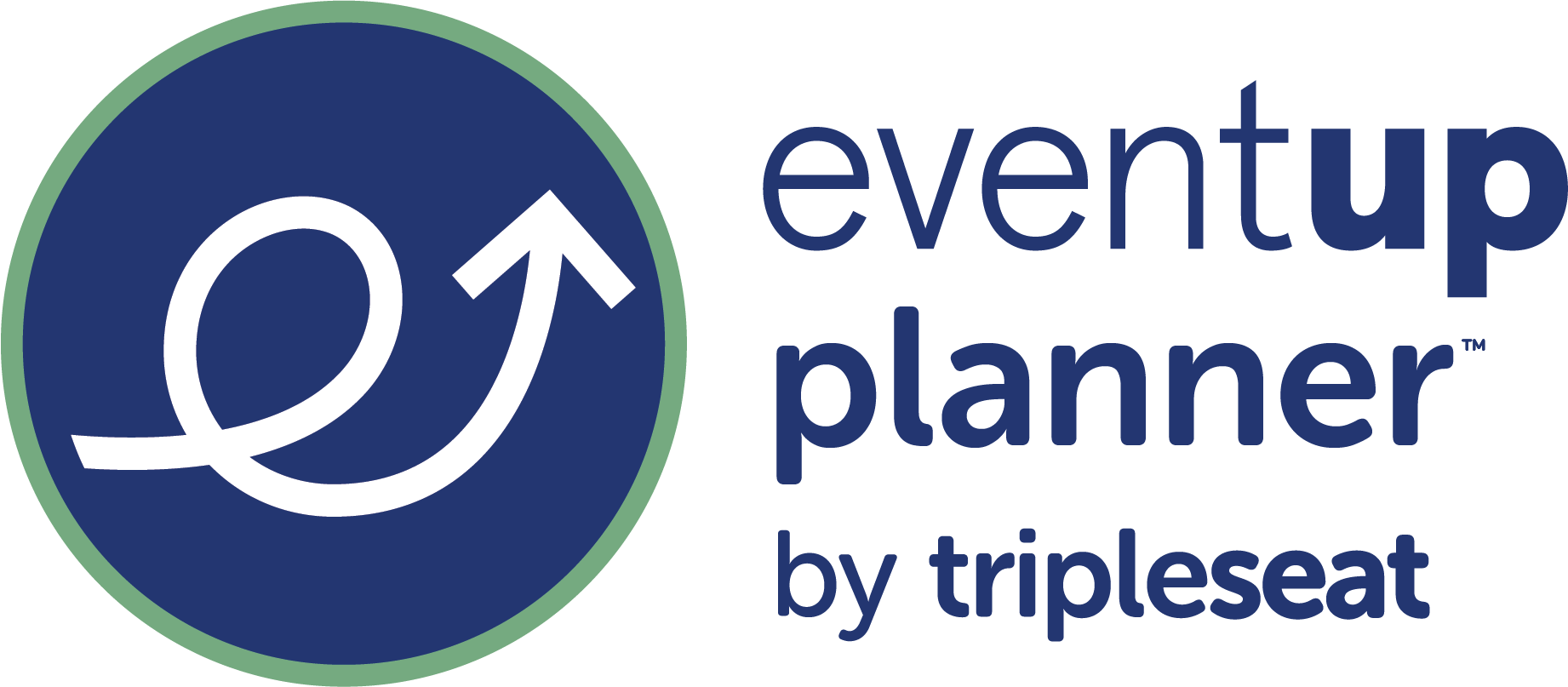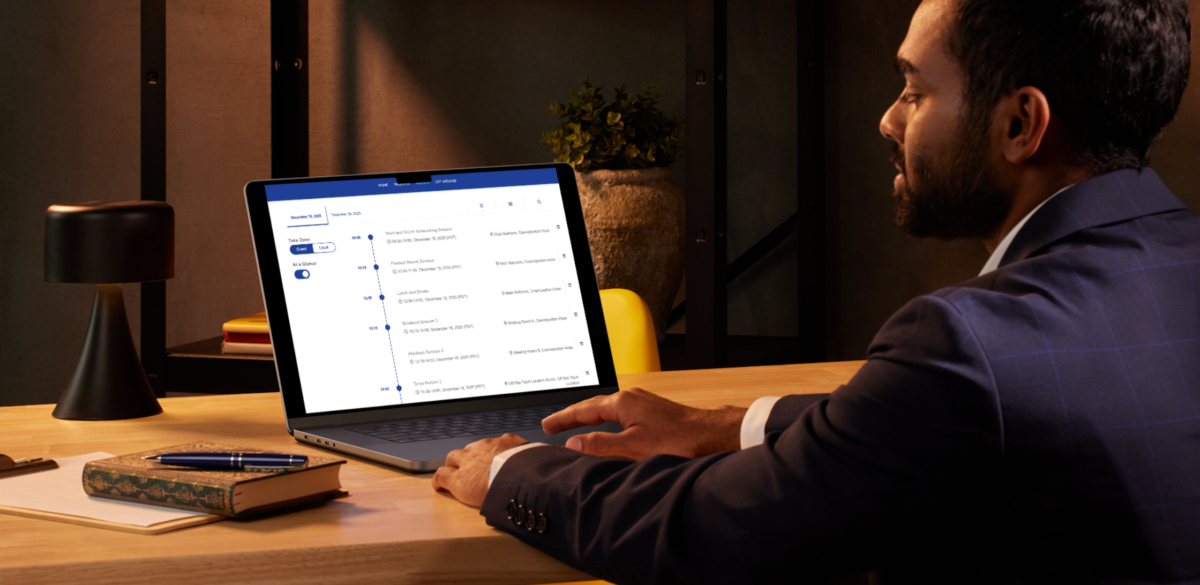Planning a multi-session event agenda can seem like putting a puzzle together—except that there is not only one single way to make it right. With sessions, breakouts, panels, discussions, networking, and more—it can be challenging to squeeze it all in, especially when you are managing a complex event with multiple venues, simultaneous sessions, or even speakers who are joining multiple sessions.
In this guide, we put together best practices that can support you in building an error-free event agenda while saving you time and providing an outstanding experience to your attendees.
What Is an Event Agenda?
An event agenda is a detailed plan or schedule outlining the activities, sessions, presentations, and timing for an event. It serves as a guide for both organizers and attendees, ensuring that everyone involved knows what to expect and when. Event agendas are commonly used for conferences, meetings, workshops, seminars, and other gatherings to keep the event organized and on track.
Event agendas can be distributed to attendees in advance to help them plan their schedule and make the most of their time at the event. They can also be used internally by event organizers and staff to coordinate logistics and ensure that everything runs smoothly.
When Should You Create an Event Agenda?
You should always create your event agenda early in your event planning process, even before sending invitations or opening registration. Sharing the agenda with your invitations helps guests understand what’s planned, decide which sessions to attend, and prepare any questions they might have. Regardless of the size of your event, having a clear agenda keeps things organized and ensures everyone stays on track, creating a more engaging experience.
What Should Be Included in an Event Agenda?
An event agenda should include essential details to guide both organizers and participants throughout the event. Here’s what should typically be included:
- Event Title and Date: Clearly state the name of the event and the date(s) it will take place.
- Start & End Times: Specify the start and end times for each session or activity to ensure everyone knows when to arrive and depart.
- Session Titles or Descriptions: Provide titles or brief descriptions for each session, presentation, or activity planned for the event.
- Speaker or Presenter Names: Include the names and titles of individuals who will be leading each session or presentation.
- Location or Room Assignments: Specify the venue or room where each session will take place to help attendees navigate the event space.
- Breaks & Networking Opportunities: Schedule breaks, meal times, and networking sessions to allow attendees time to rest, refuel, and connect with others.
- Special Instructions or Requirements: Communicate any special instructions, such as dress code, equipment needed for workshops, or pre-registration requirements for certain sessions.
- Q&A or Discussion Times: Allocate time for audience questions, discussions, or interactive elements within sessions, if applicable.
- Closing Remarks or Wrap-Up: Include a section for closing remarks or a summary to formally conclude the event.
- Contact Information: Provide contact information for event organizers or staff in case attendees have questions or need assistance during the event.
- Sponsorship Recognition: Acknowledge any sponsors or partners supporting the event, if relevant.
- Social Media Hashtags or Handles: Encourage attendees to engage with the event on social media by including relevant hashtags or handles.
Why Should You Create an Event Agenda?
Creating an event agenda is crucial for ensuring a smooth, well-organized event experience that meets the needs and expectations of both organizers and participants. Here are the top three reasons you should create an event agenda:
Organization & Structure
An agenda provides a clear roadmap for the event, outlining the sequence of sessions, presentations, and activities. It helps organizers stay organized and ensures that attendees know what to expect, reducing confusion and maximizing efficiency.
Time Management
By specifying start and end times for each session, an agenda helps participants manage their time effectively. It allows them to plan their attendance, prioritize sessions of interest, and allocate time for breaks or networking opportunities.
Communication
Sharing the agenda with attendees in advance helps set expectations and generates excitement for the event. It provides valuable information about the topics to be covered, speakers or presenters, and any special instructions, helping attendees prepare and engage more fully.
How to Make an Agenda for an Event
1. Create You Event Agenda with the Event Goal in Mind
As with any plan, always start with your goal in mind. What do you expect your event to accomplish? This will help you to determine the scope of the event agenda, which types of sessions to focus on, potential speakers, event format, and more. Here are some examples of goal-driven event sessions:
- Educational goals: workshops, expert speakers, Q&A sessions
- Inspirational goals: keynote speakers with powerful messages, panel with specialists
- Networking goals: Breakout sessions, icebreakers, games, networking gatherings, parties, social events
Regardless of the event goal, make sure to count on regular breaks to boost energy and participation. Even 15-30 minutes are enough to get the blood flowing and the mind refreshed! In addition to having breaks for meals and refreshments, the unstructured time between sessions allows attendees to take notes on the previous session, share their learnings with fellow attendees, network with other participants, catch up on email, visit the restroom, and get ready for the next round of activities.
You may also consider what sessions to schedule post-lunch to combat brain fog. Getting attendees to move after a meal can help increase alertness and keep them energized.
2. Call out for Event Speakers
Run a call for speakers campaign so those interested can apply and pitch a topic to speak at your event. Tools like the Attendease Speaker Management module can help you automate some of this process and make it easier for you to keep track of all of the applications, statuses, and speaker data. This is how it works:
- Create custom application forms
- Invite speakers, sponsors, and exhibitors to register
- Review and approve or reject applications
- Quickly publish approved profiles to your website
- Let speakers, sponsors, and exhibitors manage their information. They can add their own bio, and all you need to do is approve it. Everything will automatically be updated on your website
3. Watch for Local Events That May Interfere with Your Event Schedule
Plan your event date and time, keeping in mind other events that could cause disruptions and make it more difficult to access your event. That includes sports events, competing conferences, and music festivals… that may cause traffic jams or an influx of metro passengers on the day of your event and may interfere with a smooth program. Consider local traffic, as well: Look into rush hour trends, public transport schedules, and scheduled construction that may cause delays.
4. Keep Your Event Agenda on Schedule and on Time
Making sure each speaker is on time and respects the allocated time is a must to keep all sessions running smoothly and as planned without creating confusion for attendees who are following the schedule provided in advance. Here are some tips to support you with that:
- Build a buffer between sessions
- Make sure speakers are aware of time restrictions
- Have a set cutoff point that speakers are aware you will stick to if they go over the allotted time
- Have a timer on stage so that the speaker can track their progress
- Designate a moderator to keep track of time and give the speaker a 5-10 minute warning
- Make sure you have enough time for Q&A after each session, as required
- When all fails, have a plan to go on stage and wrap the session in a friendly manner
5. Create a Multi-Track Event Agenda
Too many options can make it hard for your attendees to select which sessions to attend. If your event has too many options to choose from, consider creating a multi-track agenda where attendees can view the most relevant sessions and activities based on their profile.
Using tags, you can easily categorize each session to make it easier for attendees to find and sign up for the activities that interest them the most.
6. Watch for Event Agenda Overlaps
When developing your event agenda and multi-track options, consider not stacking up sessions from the same track at the same time. Using tags to categorize the topic of each session/ venue/ speaker can help you schedule the sessions without overlapping them and making attendees choose between two topics they are both interested in.
The HubSpot Inbound Conference, for example, does this really well by providing tracks specific to those in marketing, sales, and customer success roles, in addition to a product education track for those interested in learning more about their platform.
7. Plan for Space Transition between Event Sessions
Consider your floor plan and session times to provide a smooth transition and transportation between sessions. Give attendees ample time to go from one session to the next without having to rush.
8. Gauge Attendee Interest with Event Surveys
Running surveys to find attendees’ interests is the easiest way to ensure you have a diverse event agenda that meets the varied needs of your audience.
Pre-event survey: send a survey pre-event, before you decide on which topics, formats, and speakers to select to gauge your audience’s interest.
Post-event survey: send a survey after your event to learn how attendees enjoyed each of the sessions and speakers. This will provide you with quality intel to decide on what to focus on for your next event.
Questions about their goals for the event, what they expect to learn, and their favorite speakers… can all be good indicators of what to provide for your upcoming event.
9. Prepare for Real-Time Schedule & Event Agenda Updates
Of course, the goal is to always provide accurate program information to attendees prior to the event, but even the best-planned events go through last-minute changes and updates. While a printable event agenda can provide easy access to the event schedule, it can also make it more difficult to manage last-minute updates.
Consider swapping print programs for environmentally friendly options, which can also provide more accurate event agenda information. TV screens across the venue displaying the agenda is one solution if your venue provides the option, or mobile apps or a mobile website can make your event agenda accessible at your attendees’ fingertips.
Event technology like Attendease can also help by automatically updating your event website agenda and mobile app as you update the backend system with new information, be that a venue change, a speaker swap, or a time update. This allows for the easiest and most accurate information to be available to attendees.
Event Agenda Examples
Here is a simple agenda created in Attendease. The event takes place in a single location.

Here is a more complex agenda created in Attendease. This agenda features multiple venues and rooms. It also shows each session’s description and speaker information. You can also select sessions based on topics and type

Leverage Attendease to Create an Effective & Engaging Event Agenda
Planning a multi-session event agenda can pose quite a challenge. Being prepared is the best way to avoid schedule conflicts and issues while delivering an amazing experience to attendees. Event technology can surely support this endeavor; check out the Attendease event platform and the Standalone Agenda Management System – which can be plugged into your current tech stack.












